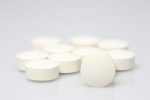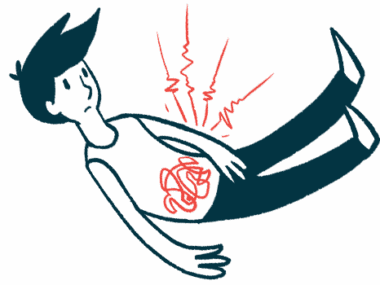Low Blood Levels of HCQ, Not the Prescribed Dose, Linked to SLE Flares
More research needed to find optimal conditions before reducing the dosage
Written by |

Low blood levels of hydroxychloroquine (HCQ) put people with systemic lupus erythematosus (SLE) at higher risk of experiencing disease exacerbations, or flare-ups, a study has found.
“We found that low HCQ blood levels predicted lupus flares,” researchers wrote, noting that low levels can reflect poor treatment adherence but also individual metabolic rates.
In addition, prescribed doses of HCQ at or below 5 mg/kg were not associated with significantly more flare-ups compared with higher doses, according to the findings.
“Further research focused on defining the optimal conditions for HCQ reduction is needed,” researchers noted.
The study, “Hydroxychloroquine daily dose, hydroxychloroquine blood levels and the risk of flares in patients with systemic lupus erythematosus,” was published in the journal Lupus Science & Medicine.
Hydroxychloroquine is anti-malarial medication often used for SLE
HCQ, marketed as Plaquenil, among other names, is a relatively inexpensive and well-tolerated anti-malarial medication that’s commonly used to treat SLE. Ample evidence shows that HCQ can control lupus symptoms and prevent disease flares.
On the other hand, HCQ buildup in certain tissues can lead to side effects such as retinopathy, which is marked by damage to blood vessels found at the back of the eye. Thus, guidelines from the American Academy of Ophthalmology state that the maximum dose of HCQ in SLE should be 5 mg/kg.
However, many previous studies identified 6.5 mg/kg as the ideal dose for controlling SLE symptoms. It isn’t yet established whether a lower dose might compromise the treatment’s effectiveness, but some studies have suggested that a dose of 5 mg/kg or less might increase the risk of disease flares.
Moreover, adherence to HCQ among SLE patients is low, meaning that many patients will actually be exposed to a dose of the therapy that is inferior to the one they’ve been prescribed. Previous studies hadn’t been able to account for that variable, the researchers noted.
The risks and benefits must be balanced in choosing the HCQ dose.
Study assesses if HCQ dose affects risk of SLE flares in patients
In this study, researchers wanted to evaluate if HCQ dose influences the risk of SLE flares among patients seen at a hospital in Italy from November 2014 to November 2016, while also accounting for treatment adherence.
All participants were in disease remission for at least a year, and had used HCQ at a stable dosage for at least six months. Participants were grouped based on whether their dosage of HCQ was above 5 mg/kg, or at or below that dosage.
A total of 83 participants were included in the study. Blood levels of HCQ were used as a proxy measure of patients’ adherence to treatment. A blood level below 100 nanograms per milliliter (ng/mL) of blood was reflective of long-term non-adherence, according to the researchers.
Results showed that 17 participants were non-adherent. These participants were not included in further analyses.
Of the remaining 66 participants — 65 women and one man — the mean age was 42 years. Most patients (a total of 39) were receiving a dosage of HCQ above 5 mg/kg, while 27 were receiving a lower dosage.
Therapeutic blood levels of HCQ — from 500 ng/mL to 2,000 ng/mL — were observed in 34 people, whereas 31 were considered partially adherent (100–500 ng/mL) and one person had levels above the therapeutic range.
Clinical data from two years of follow-up were analyzed for these 66 patients.
Blood HCQ levels did not correlate with treatment dosage, and the proportion of patients with therapeutic levels of HCQ in the bloodstream didn’t differ between the two dosage groups.
HCQ blood levels considered independent risk factor for disease flare
Overall, 11 disease flares were recorded, seven of which occurred in the low dosage group and four in the high dosage group. All but one flare in the low dosage group were mild to moderate in severity.
There was a trend toward a lower flare rate in the high-dosage group, but this difference failed to reach statistical significance.
Patients who experienced flares had a significantly lower mean HCQ blood level compared with those who did not have a flare, whereas stable, therapeutic blood levels of HCQ were associated with no occurrence of flares.
In final analyses, HCQ blood levels were considered an independent risk factor for a disease flare, as was the use of immunosuppressant therapies, whereas older age was associated with a lower flare risk.
Ultimately, the optimal dose of HCQ still lacks consensus.
“The risks and benefits must be balanced in choosing the HCQ dose,” the researchers wrote.
Nonetheless, HCQ blood levels can predict lupus flares.
“Periodical monitoring of HCQ levels might allow identification of early non-adherence, improve subsequent adherence, adjust the daily dosage based on individual … variability and overall improve outcome in SLE,” the team wrote.







